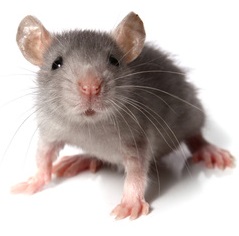Comprehensive Vole Pest Control Services in Utah
Comprehensive Vole Pest Control Services in Utah
Blog Article
Comprehensive Overview to Effective Vole Insect Control: Problem Recognition and Treatment Techniques
In the realm of effective insect control, vole infestations present a special obstacle that demands a strategic method. These little rats, commonly incorrect for computer mice, can damage yards, yards, and crops if left unattended. Determining the indicators of vole existence and executing targeted therapy techniques are crucial components of an effective pest monitoring plan. By discovering the nuances of vole actions, recognizing crucial signs of infestation, and examining an array of control choices, one can develop a thorough method to battle these elusive insects.
Recognizing Vole Actions
Vole habits is identified by their burrowing behaviors and fast recreation prices, making them a challenging pest to manage effectively. These little rats typically produce intricate passage systems underground, utilizing them for shelter, food storage space, and transport. Voles are herbivores, taking in a selection of plants, light bulbs, yards, and origins, which can trigger significant damages to gardens, orchards, and grass. Their fast reproductive price more complicates control efforts, with females efficient in producing multiple clutters in a single year, each having several spawn.
Voles are most active during the early morning and evening hours, investing most of their time foraging for food. Their delving habits not just disturb gardens and lawns but additionally make them challenging to find and remove. Comprehending vole behavior is important for effective insect control techniques. By recognizing their burrow locations, checking feeding locations, and implementing targeted control techniques, such as capturing or environment modification, vole infestations can be handled efficiently.
Signs of Vole Invasion

Avoidance Approaches
Carrying out effective prevention strategies is important in decreasing vole invasions and safeguarding plants from their destructive feeding routines. To protect against vole invasions, it is crucial to start by removing possible food sources and sanctuary.
Frequently checking the property for indications of vole task, such as paths and delve openings, is essential for early detection and punctual activity. Think about making use of repellents or traps strategically positioned near their paths if vole task is believed. Using natural killers like serpents or owls can also aid keep vole populations in check. By carrying out a mix of these avoidance strategies, house owners and gardeners can effectively shield their plant life from vole damages.
Non-Lethal Control Approaches
To efficiently handle vole populations while focusing on humane techniques, non-lethal control techniques offer useful remedies for minimizing vole damage in landscapes and yards. One reliable approach is the use of physical barriers such as equipment towel or wire mesh to secure vulnerable plants. These obstacles can be buried a minimum of 12 inches deep and bent at a 90-degree angle to avoid voles from burrowing underneath. Additionally, environment adjustment can deter voles by decreasing their preferred food resources and concealing places. Keeping a well-mowed lawn, eliminating debris, and keeping plant life trimmed can make the atmosphere less appealing to voles.

Lethal Control Options
One reliable technique for dealing with vole infestations in landscapes and gardens includes the critical usage of dangerous control choices. When confronted with an extreme vole infestation that non-lethal techniques have stopped working to have, implementing deadly control procedures ends up being essential. One commonly utilized lethal control alternative is the use of snap catches. These traps are developed to quickly and humanely kill voles upon activation, making them a popular selection for several garden enthusiasts and landscapers. To enhance the efficiency of More Bonuses snap catches, it is recommended to position them in locations where vole activity is high, such as along runways or near burrow entries. Another lethal control choice is the utilization of hazardous baits particularly created to target voles. These lures contain toxin that is ingested by the voles, causing their eventual demise. Nevertheless, care needs to be exercised when using harmful baits to stop injury to non-target pets or animals. Overall, when utilizing dangerous control options, it is essential to do so properly and according to neighborhood laws to successfully manage vole problems.
Conclusion
Finally, reliable vole pest control needs a thorough understanding of vole behavior, recognition of indicators of problem, implementation of prevention methods, and usage of both lethal and non-lethal control approaches. By combining these approaches, people can effectively manage vole populations and protect their property from damage. It is very important to attend to vole problems promptly to avoid more problems and minimize the influence on the surrounding environment.
Provided the intricate passage systems and fast recreation prices characteristic of voles, acknowledging the indicators of vole invasion comes to be important in reliable insect control. One of the primary indicators of vole visibility is the existence of surface area paths or trails in grass or snow, usually about 1-2 inches broad, produced as voles take a trip between their burrows and food resources.To effectively manage vole populations while focusing on humane techniques, non-lethal control techniques use useful options for click resources decreasing vole damage in landscapes and gardens.One efficient method for dealing with vole invasions in landscapes and yards involves the calculated usage of deadly control alternatives. vole pest control.In verdict, reliable vole bug control requires an extensive understanding of vole habits, identification of signs of invasion, execution of prevention methods, and usage of both dangerous and non-lethal control methods
Report this page